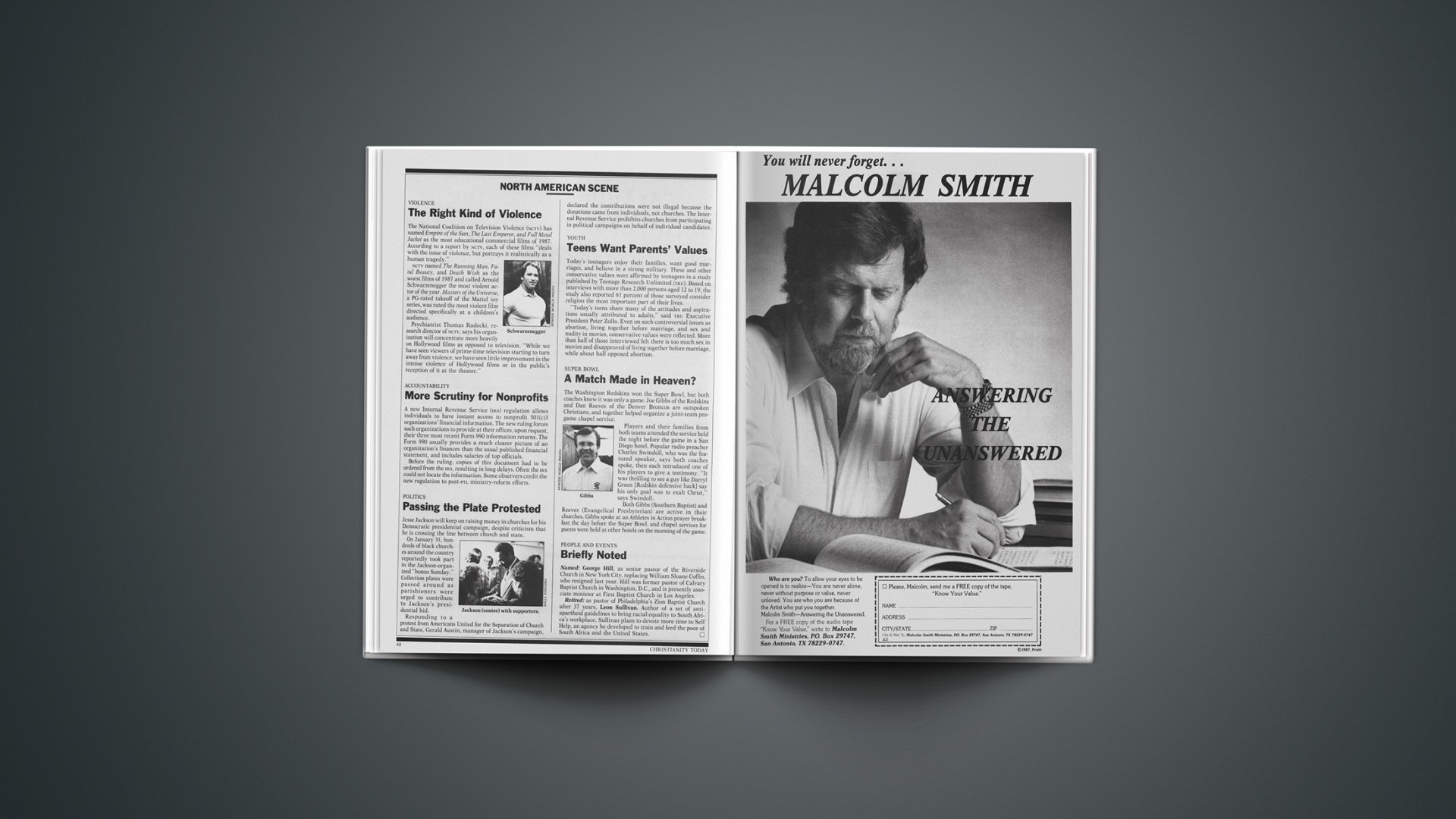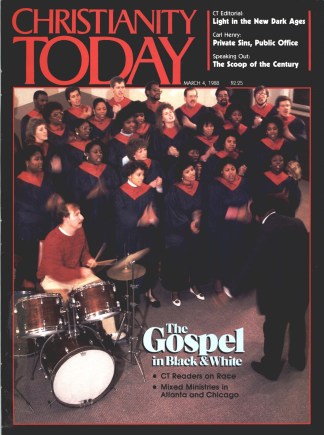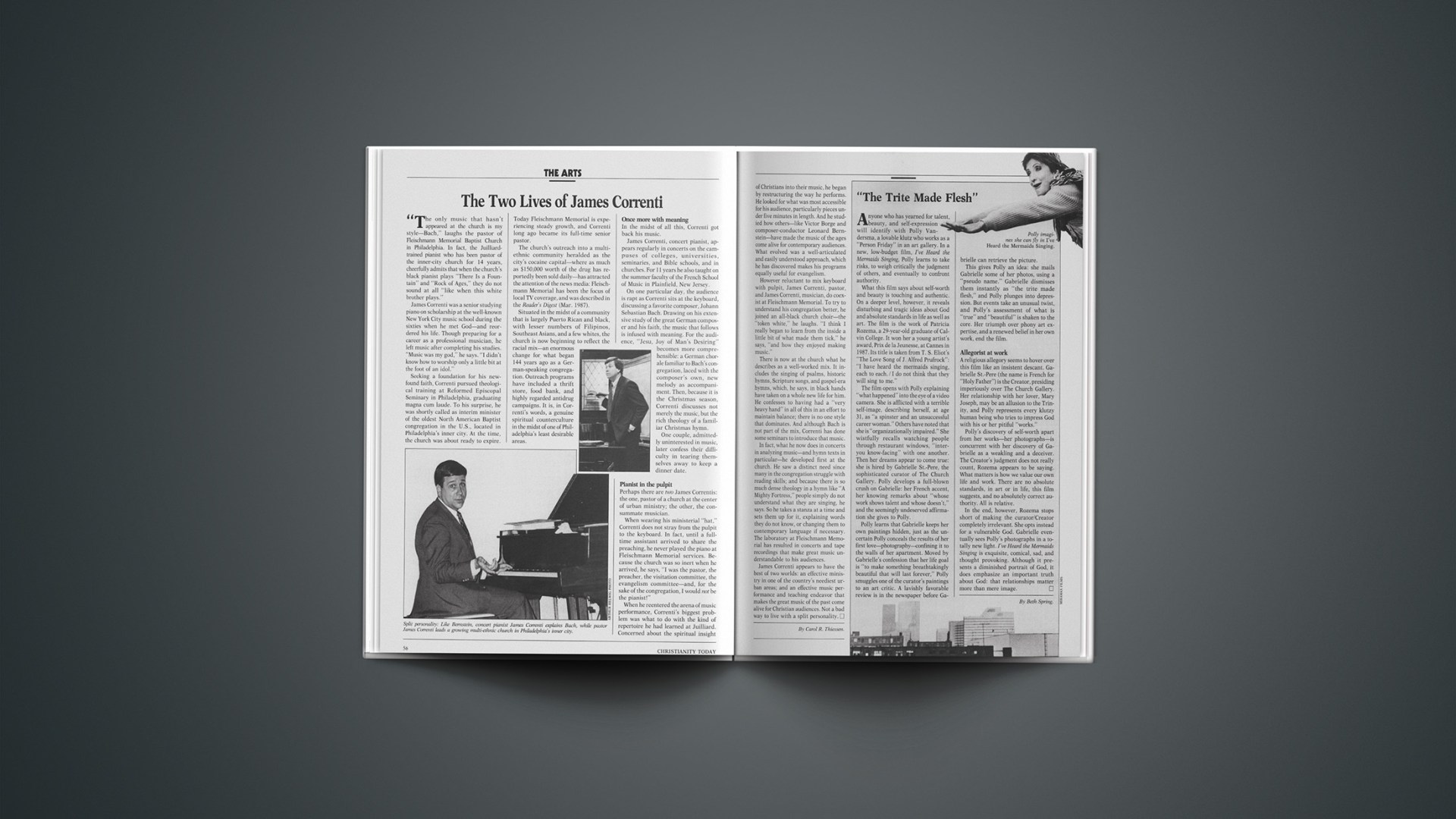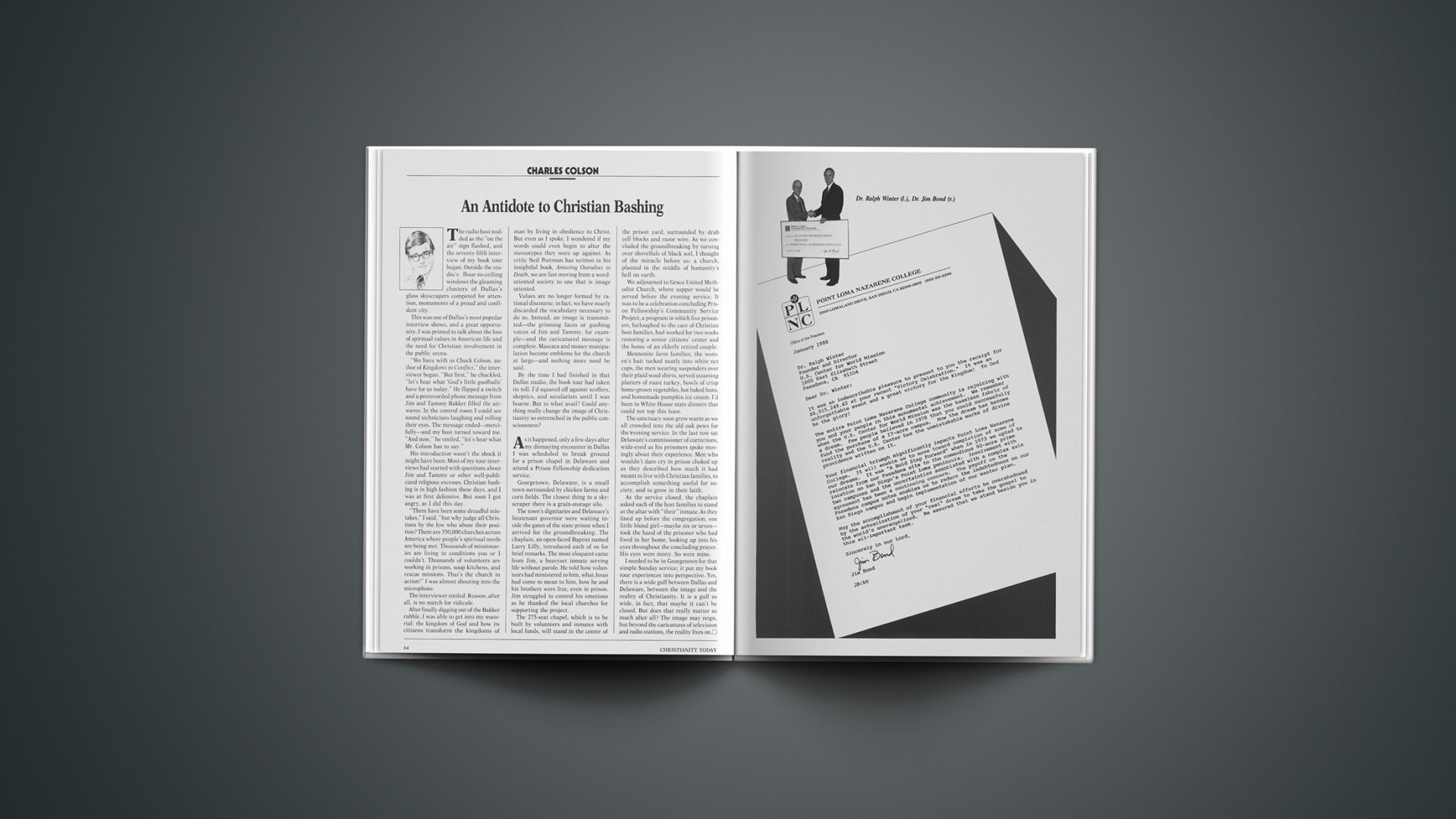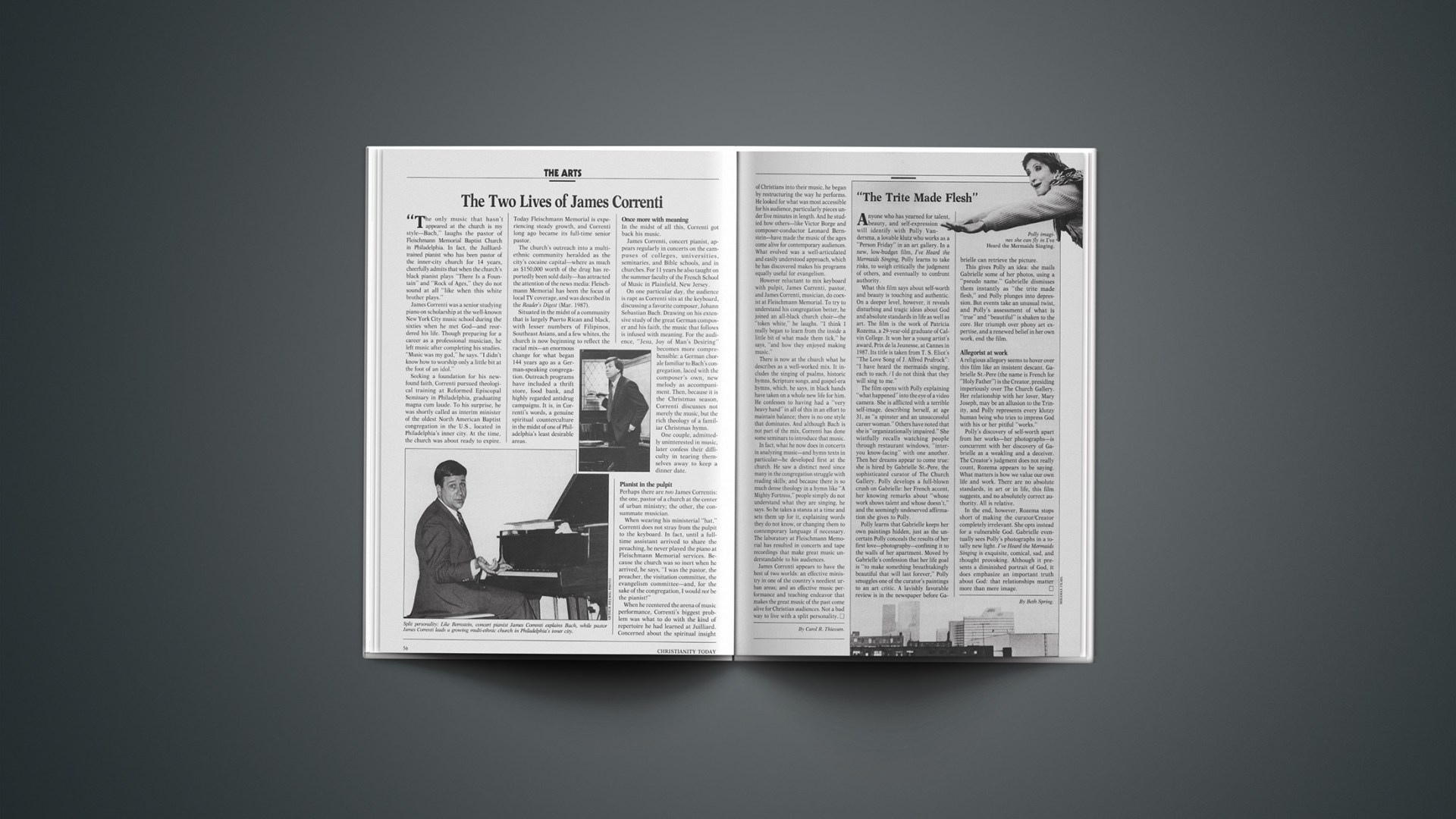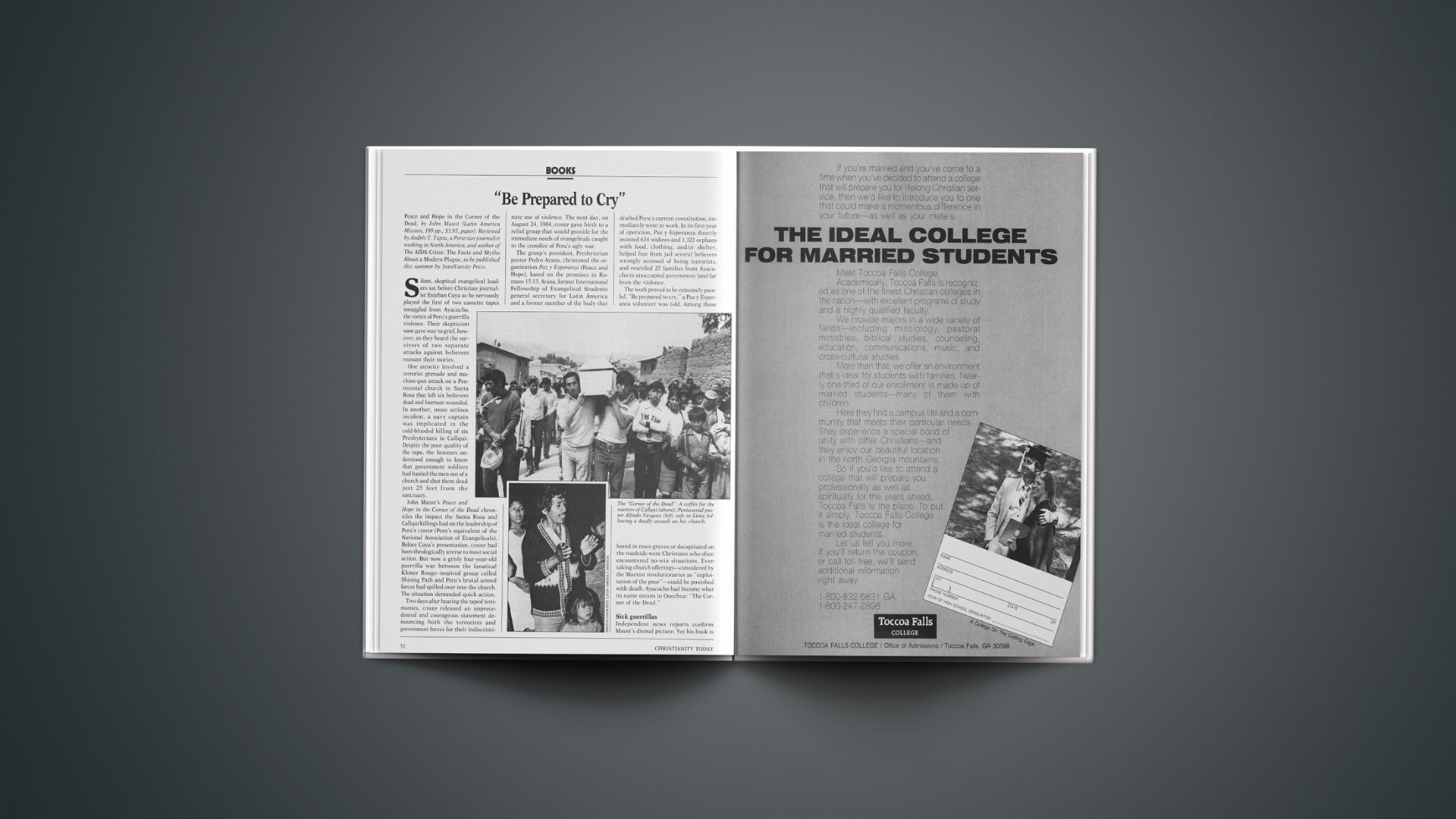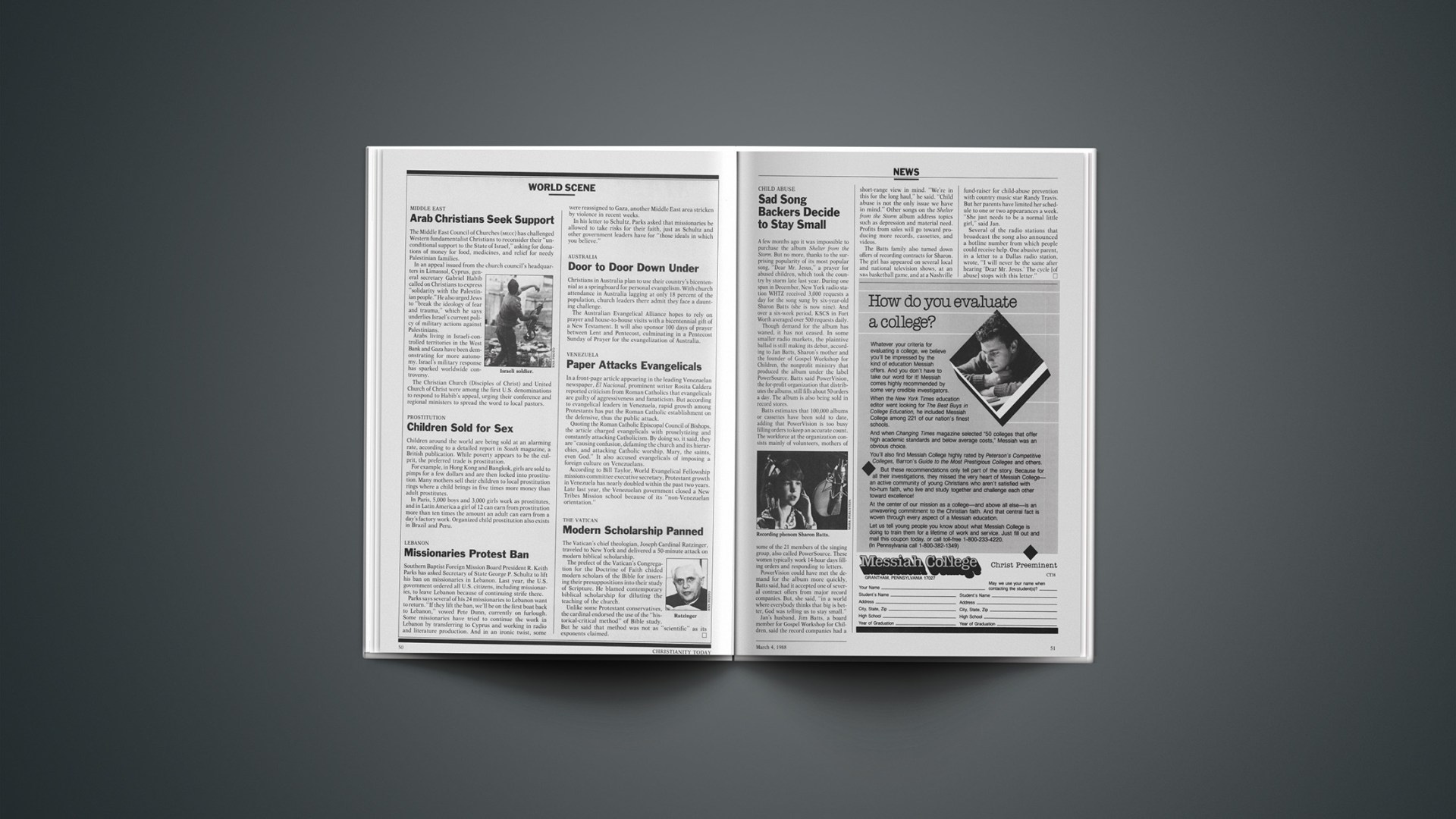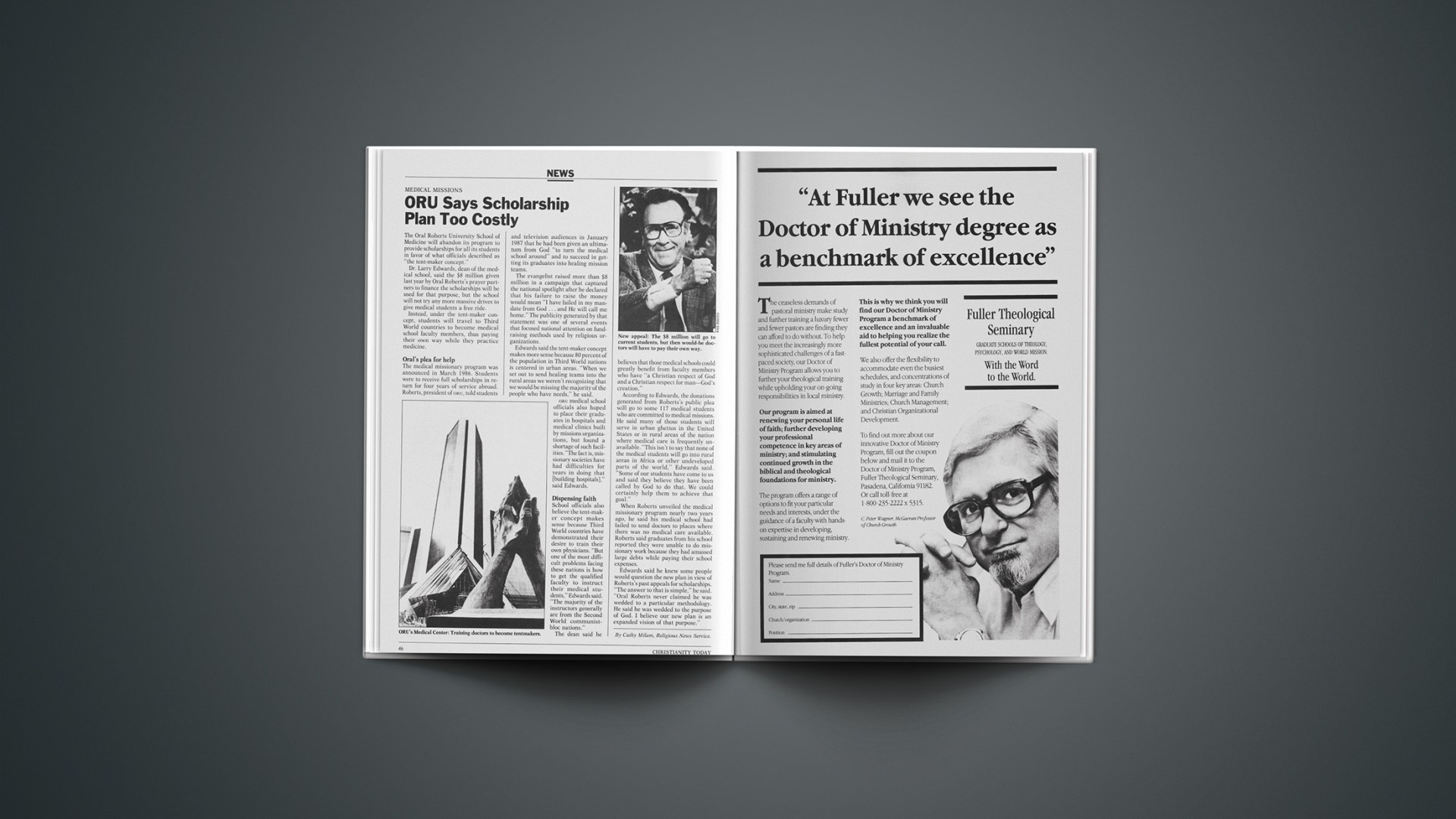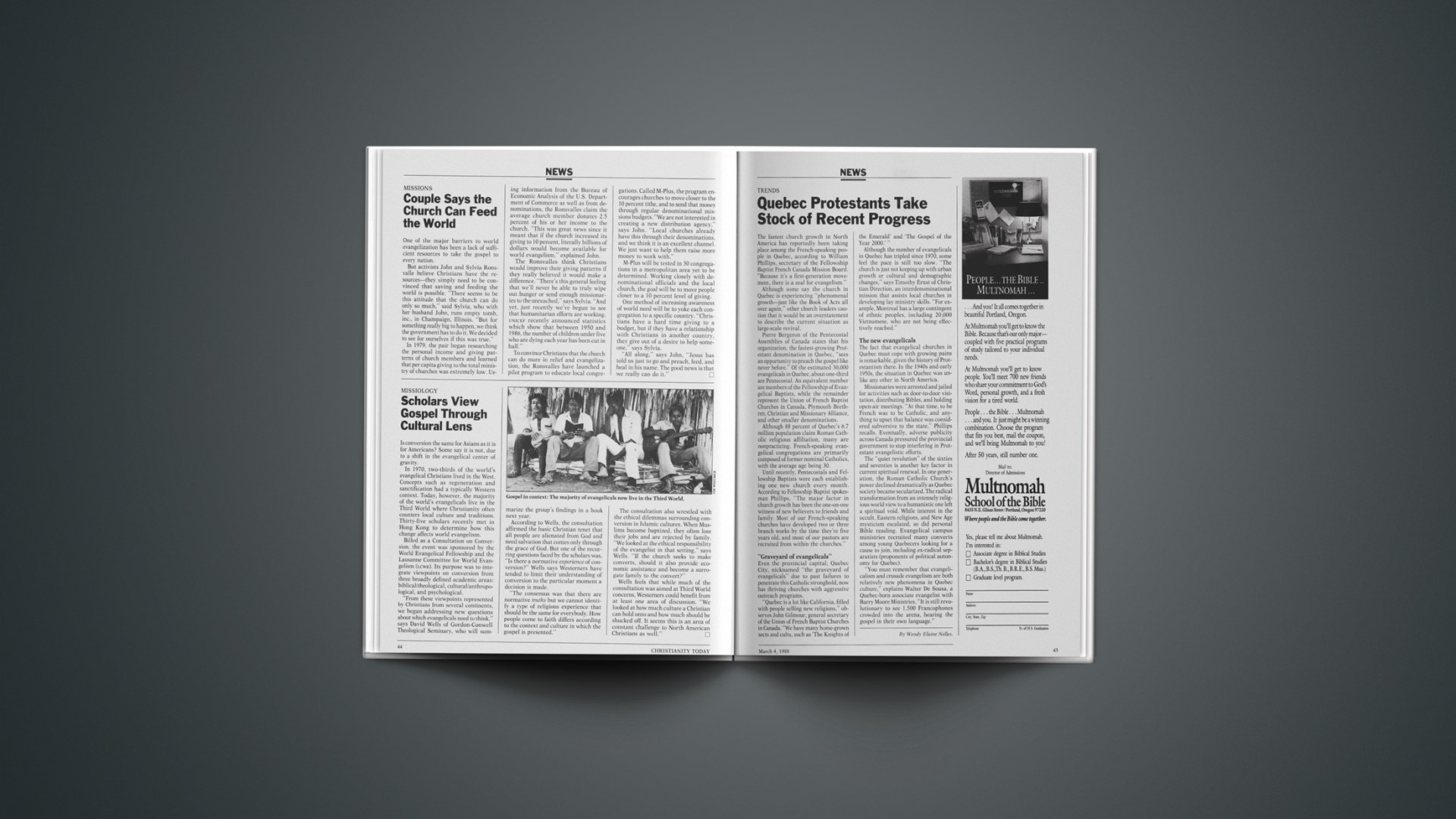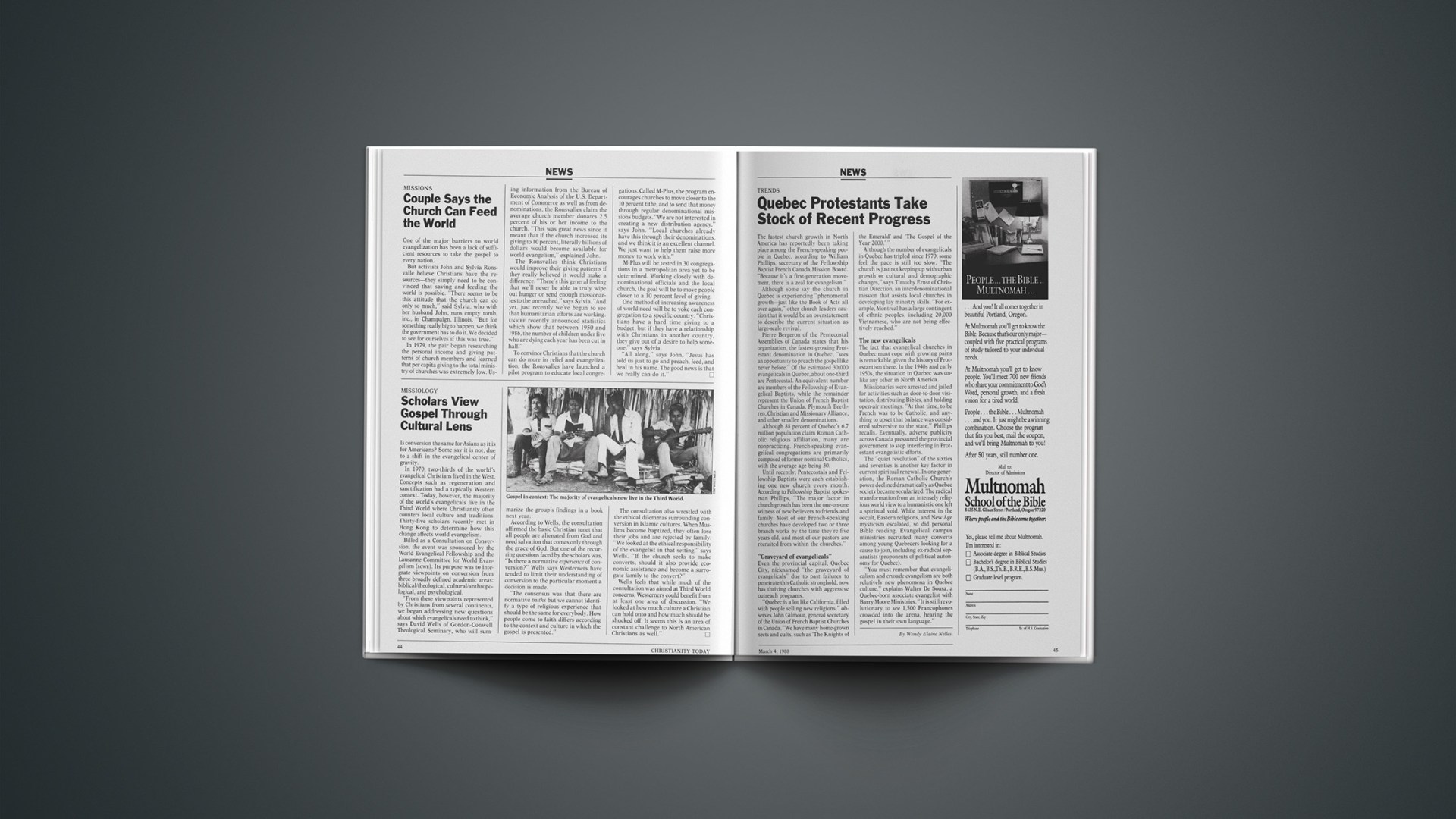VIOLENCE
The Right Kind Of Violence
The National Coalition on Television Violence (NCTV) has named Empire of the Sun, The Last Emperor, and Full Metal Jacket as the most educational commercial films of 1987. According to a report by NCTV, each of these films “deals with the issue of violence, but portrays it realistically as a human tragedy.”
NCTV named The Running Man, Fatal Beauty, and Death Wish as the worst films of 1987 and called Arnold Schwarzenegger the most violent actor of the year. Masters of the Universe, a PG-rated takeoff of the Mattel toy series, was rated the most violent film directed specifically at a children’s audience.
Psychiatrist Thomas Radecki, research director of NCTV, says his organization will concentrate more heavily on Hollywood films as opposed to television. “While we have seen viewers of prime-time television starting to turn away from violence, we have seen little improvement in the intense violence of Hollywood films or in the public’s reception of it at the theater.”
ACCOUNTABILITY
More Scrutiny For Nonprofits
A new Internal Revenue Service (IRS) regulation allows individuals to have instant access to nonprofit 501(c)3 organizations’ financial information. The new ruling forces such organizations to provide at their offices, upon request, their three most recent Form 990 information returns. The Form 990 usually provides a much clearer picture of an organization’s finances than the usual published financial statement, and includes salaries of top officials.
Before the ruling, copies of this document had to be ordered from the IRS, resulting in long delays. Often the IRS could not locate the information. Some observers credit the new regulation to post-PTL ministry-reform efforts.
POLITICS
Passing The Plate Protested
Jesse Jackson will keep on raising money in churches for his Democratic presidential campaign, despite criticism that he is crossing the line between church and state.
On January 31, hundreds of black churches around the country reportedly took part in the Jackson-organized “bonus Sunday.” Collection plates were passed around as parishioners were urged to contribute to Jackson’s presidential bid.
Responding to a protest from Americans United for the Separation of Church and State, Gerald Austin, manager of Jackson’s campaign, declared the contributions were not illegal because the donations came from individuals, not churches. The Internal Revenue Service prohibits churches from participating in political campaigns on behalf of individual candidates.
YOUTH
Teens Want Parents’ Values
Today’s teenagers enjoy their families, want good marriages, and believe in a strong military. These and other conservative values were affirmed by teenagers in a study published by Teenage Research Unlimited (TRU). Based on interviews with more than 2,000 persons aged 12 to 19, the study also reported 61 percent of those surveyed consider religion the most important part of their lives.
“Today’s teens share many of the attitudes and aspirations usually attributed to adults,” said TRU Executive President Peter Zollo. Even on such controversial issues as abortion, living together before marriage, and sex and nudity in movies, conservative values were reflected. More than half of those interviewed felt there is too much sex in movies and disapproved of living together before marriage, while about half opposed abortion.
SUPER BOWL
A Match Made In Heaven?
The Washington Redskins won the Super Bowl, but both coaches knew it was only a game. Joe Gibbs of the Redskins and Dan Reeves of the Denver Broncos are outspoken Christians, and together helped organize a joint-team pregame chapel service.
Players and their families from both teams attended the service held the night before the game in a San Diego hotel. Popular radio preacher Charles Swindoll, who was the featured speaker, says both coaches spoke, then each introduced one of his players to give a testimony. “It was thrilling to see a guy like Darryl Green [Redskin defensive back] say his only goal was to exalt Christ,” says Swindoll.
Both Gibbs (Southern Baptist) and Reeves (Evangelical Presbyterian) are active in their churches. Gibbs spoke at an Athletes in Action prayer breakfast the day before the Super Bowl, and chapel services for guests were held at other hotels on the morning of the game.
PEOPLE AND EVENTS
Briefly Noted
Named: George Hill, as senior pastor of the Riverside Church in New York City, replacing William Sloane Coffin, who resigned last year. Hill was former pastor of Calvary Baptist Church in Washington, D.C., and is presently associate minister at First Baptist Church in Los Angeles.
Retired : as pastor of Philadelphia’s Zion Baptist Church after 37 years, Leon Sullivan. Author of a set of antiapartheid guidelines to bring racial equality to South Africa’s workplace, Sullivan plans to devote more time to Self Help, an agency he developed to train and feed the poor of South Africa and the United States.

